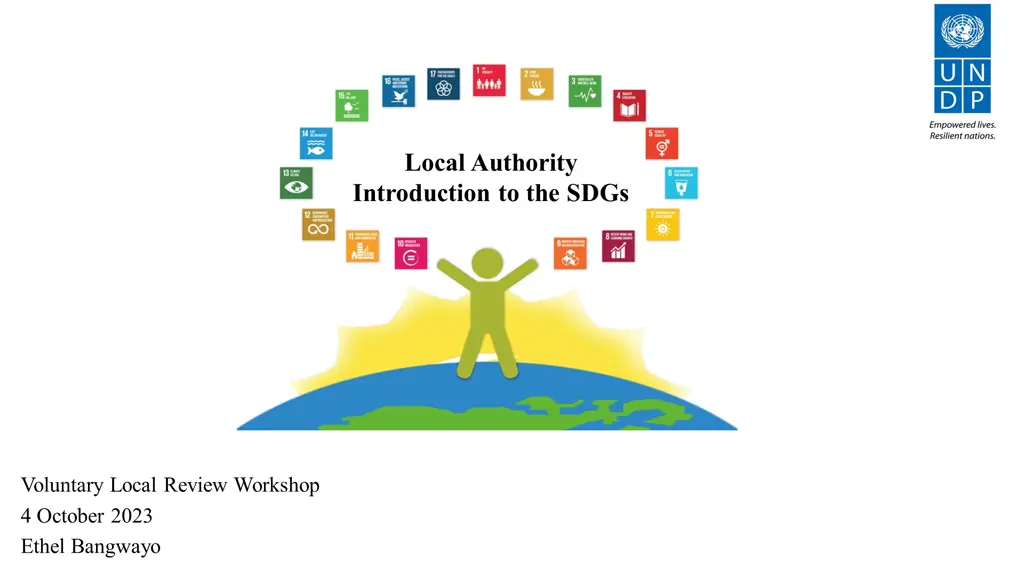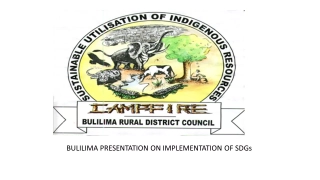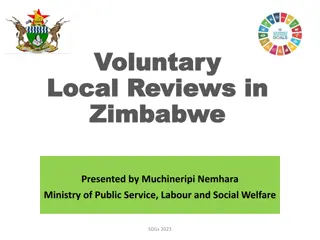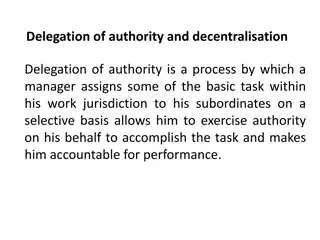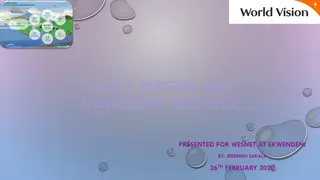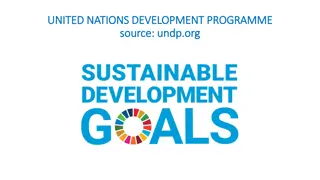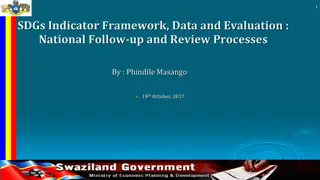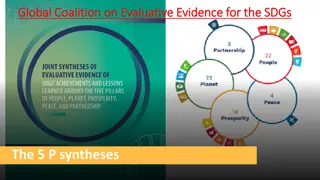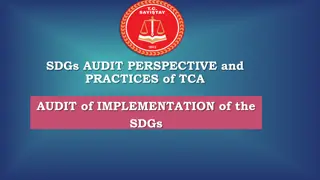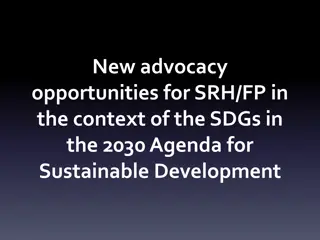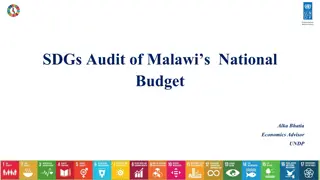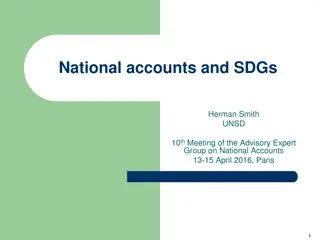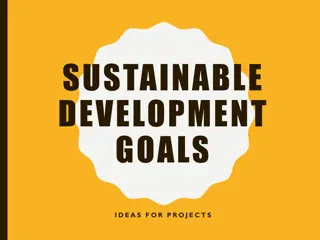Local Authority Introduction to the SDGs
Voluntary Local Review Workshop on October 4, 2023, organized by Ethel Bangwayo. Learn about the interconnectedness of the goals, roles and responsibilities of local authorities, and the importance of SDGs at home.
Download Presentation

Please find below an Image/Link to download the presentation.
The content on the website is provided AS IS for your information and personal use only. It may not be sold, licensed, or shared on other websites without obtaining consent from the author.If you encounter any issues during the download, it is possible that the publisher has removed the file from their server.
You are allowed to download the files provided on this website for personal or commercial use, subject to the condition that they are used lawfully. All files are the property of their respective owners.
The content on the website is provided AS IS for your information and personal use only. It may not be sold, licensed, or shared on other websites without obtaining consent from the author.
E N D
Presentation Transcript
Local Authority Introduction to the SDGs Voluntary Local Review Workshop 4 October 2023 Ethel Bangwayo
Contents Context: Development Commitments and Priorities 1 Introduction and overview 2 Interconnectedness of the Goals 3 SDGs and Local Authorities the nexus 4 Roles and Responsibilities 5 SDGs at Home 6 Conclusion 7
Development Commitments and Priorities Zimbabwe has committed to all three in pursuit of Vision 2030 All three are related and interlinked Global: SDGs Regional: Africa Agenda 2063 Local National: NDS1 Development Plan
Introduction Millenium Development Goals (MDGs) Sustainable Development Goals (SDGs) MDGs were at the centre of development policy between 2000 and 2015 Locally, the MDGs were implemented during tough economic times however, some progress was made in some areas eg. education, gender (see final MDG report) SDGS will guide development priorities for 2016 to 2030 Will carry on the unfinished business of the MDGs, together with emerging issues Economic growth will thus, be essential to Zimbabwe s SDG implementation experience
Timeline We are here 2016 2021 2026 2030 Chronologically, we are half way but in terms of achievement, we are lagging. Globally.
Sustainable Development Goals 17 Goals. 169 targets. 230 indicators.
The 5 Ps Peace: Goal 16 Peaceful, just and inclusive societies that are free of conflict. Development issues under the SDGs have been grouped into 5 categories: People; Planet; Prosperity; Peace and Partnerships The categorization is largely linked to the interconnectedness of the Goals Recognition of the interconnectedness leads to a holistic view of the challenges and consequently, holistic interventions
Zimbabwes position paper In the country s position paper, Zimbabwe has committed to implementing all 17 goals while prioritising enabler goals as follows: SDG 2: End hunger SDG 3: Health SDG 4: Education SDG 5: Gender SDG 8: SDG 9: SDG 6: WASH SDG 7: Energy Jobs & economic growth Infrastructure & Industrialisaton SDG 17: SDG 13: Climate change SDG 16: Peace and justice Global Partnership
Interconnectedness of the Goals Interconnectedness leads to complementarity and trade offs Questions to consider How will my work in one Goal affect another? Which Goals are the most catalytic Goals for our organisation? Are there adverse impacts from my SDG work and implementation? How can we best take a 360 view of interventions is key to minimise negative impact Source: UNDESA, David LeBlanc
Revisiting interconnectedness . Potential unforeseen impact What does allocation of land for housing developments (SDG 11), mean for the environment (SDG 13 &15), or for recreational space (SDG 11)? What does a council tax on the informal sector (SDG17), mean for livelihoods and poverty (SDG1&8)? What does removal of informal settlements (SDG 11), mean for poverty and Toenda Kumunda inequality (SDG 1 & SDG 10)? Highlights the importance of coherence of strategies, policies and frameworks
Examples of SDGs-related Local Authority work 1: Targeting and selection of social protection recipients Devolved resource mobilisation 17 Action against corruption 16 2: Availing land for community gardens; targeting of beneficiaries of aid Protection of forests 15 3: Well-equipped council clinics Maintenance of water bodies 14 4: Well-equipped schools Integrate national climate policy into local development plans 13 5: Women in management Recycling facilities 12: 6: Ensure availability of council water Enforcement of planning laws 11: 7: Solar for street lighting, LA buildings and premises Provision of basic services 10: 8: Serviced market stalls and infrastructure Maintenance of roads 9:
Focus on SDG 11: LA work Municipal waste collection Availability of open and recreational space Inclusiveness of planning decisions Land consumption rate: population growth Development Plans Slums and informal settlements Disaster Risk Reduction Strategies SDG 11
Level of contribution and measurement Goal Target Indicator
A few LA-related indicators 1.4.1 Proportion of population living in households with access to basic services 1.5.4 Proportion of local governments that adopt and implement local disaster risk reduction strategies in line with national disaster risk reduction strategies 3.8.1 Coverage of essential health services 6.1.1 Proportion of population using safely managed drinking water services 6.3.1 Proportion of domestic and industrial wastewater flows safely treated 6.b.1 Proportion of local administrative units with established and operational policies and procedures for participation of local communities in water and sanitation management 12.5.1 National recycling rate, tons of material recycled 12.a.1 Installed renewable energy-generating capacity in developing countries (in watts per capita)
From global to regional to national Zimbabwe has aligned all three development agendas Agenda 2063 Goals SDGs NDS Strategic Priority Local Development Plan 1. End poverty in all its forms everywhere in the world 2. Food Security and Nutrition ? 2. End hunger, achieve food security and improved nutrition and promote sustainable agriculture. 11. Social Protection ? 1. A high standard of living, quality of life and well-being for all citizens. 8. Promote sustained, inclusive and sustainable Economic growth, full and productive employment and decent work for all. 1. Economic Growth and Stability ? 11.Make cities and human settlements inclusive, safe, resilient and sustainable. 6. Housing Delivery ? 2. Well educated citizens and skills revolution underpinned by science, technology and innovation. 4. Ensure inclusive and equitable quality education and promote lifelong learning opportunities for all. 8. Human Capital Development ? 3. Ensure healthy lives and promote well-being for all at all ages. ? 3. Healthy and well-nourished citizens. 7. Health and Wellbeing 8. Promote sustained, inclusive and sustainable economic growth, full and productive employment and decent work for all. ?
Role of Government and the UN OPC: Provides oversight Monitoring & measuring Ministry of Public Service, Labour and Social Leadership & Coordination Welfare: Coordination through SDG Unit ZIMSTAT: Data lead Alignment & mainstreaming The UNRCO: Coordinator UNDP: Integrator role SDGs at Country level UN system: Implementation
Your role How to get involved: Engage communities and local stakeholders for the SDG implementation Integration of the SDGs into local development plans Mobilise resources for local development in the context of the SDGs Awareness-raising within your local area
On the home front . I have a family member who engages in substance abuse Experience of taking care of an elderly or ill relative My child has finished school/ university and cannot find a job I have installed solar power in my home My tap water is dirty
Conclusion SDG success will require: Awareness Domestication and localisation Mainstreaming into everyday work Committed development funding devolution funds? Involvement of all stakeholders
Thank you! Ethel Bangwayo ethel.bangwayo@undp.org 04 338836 - 44 0735 672 081
